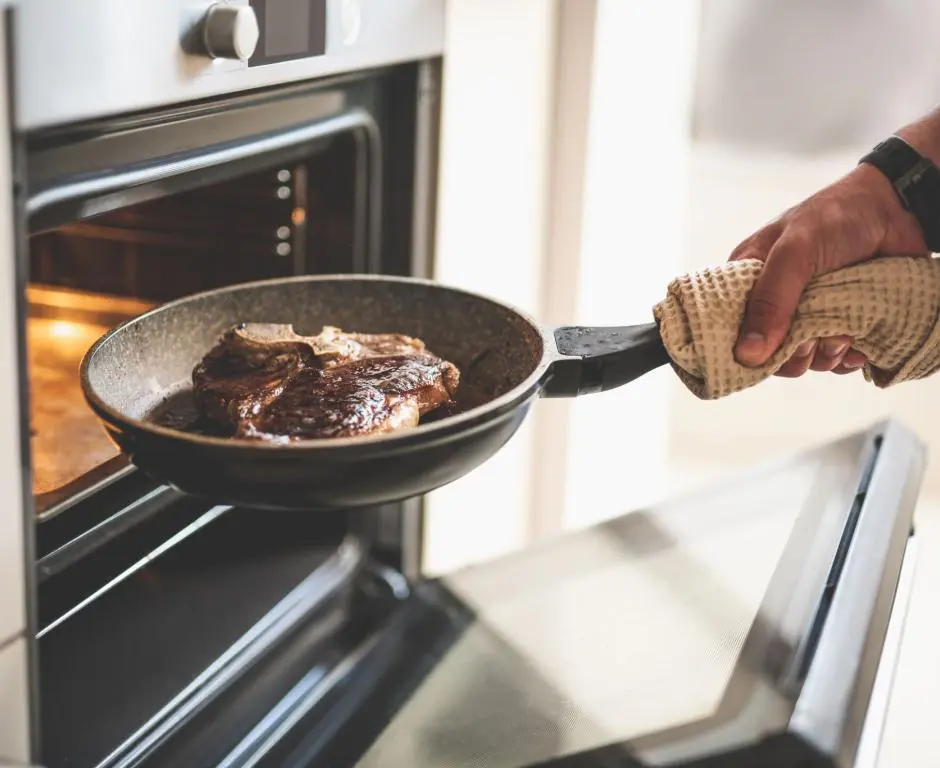Pan roasting is a versatile cooking technique that combines the best aspects of searing and oven roasting to achieve perfectly cooked, flavorful meat with a delicious crust.
This method is particularly effective for moderately thick cuts of meat that benefit from both the direct heat of a stovetop and the even cooking of an oven.
In this guide, we’ll explore the steps and tips for pan roasting, helping you to master this technique and bring out the best in your chosen cuts of meat.
What is Pan Roasting?
Pan roasting begins with searing the meat on the stovetop to develop a rich, caramelized crust and finishes in the oven where the meat cooks evenly through.
This technique ensures that the exterior of the meat is enticingly browned and flavorful, while the interior remains juicy and tender. Pan roasting is ideal for achieving a gourmet level of cooking in your home kitchen.
Best Cuts for Pan Roasting
The key to successful pan roasting is selecting the right cuts of meat. These should be thick enough to benefit from this dual cooking method without drying out:
- Beef: Thick steaks such as ribeye, strip steak, or filet mignon.
- Pork: Pork loin, pork chops, or tenderloin.
- Chicken: Bone-in, skin-on chicken breasts or thighs.
- Lamb: Thick lamb chops or a small rack of lamb.
These cuts are robust enough to handle the high heat of searing and will remain moist during the oven phase.
Step-by-Step Guide to Pan Roasting Meat
Equipment Needed:
- Oven-safe skillet, preferably cast iron
- Tongs
- Meat thermometer
Cooking Steps:
Preheat the Oven:
Start by preheating your oven to a moderate temperature, typically around 350°F (175°C), which will cook the meat gently after searing.
Prepare the Meat:
Pat the meat dry with paper towels to remove excess moisture. Season well with salt, pepper, and any other desired spices.
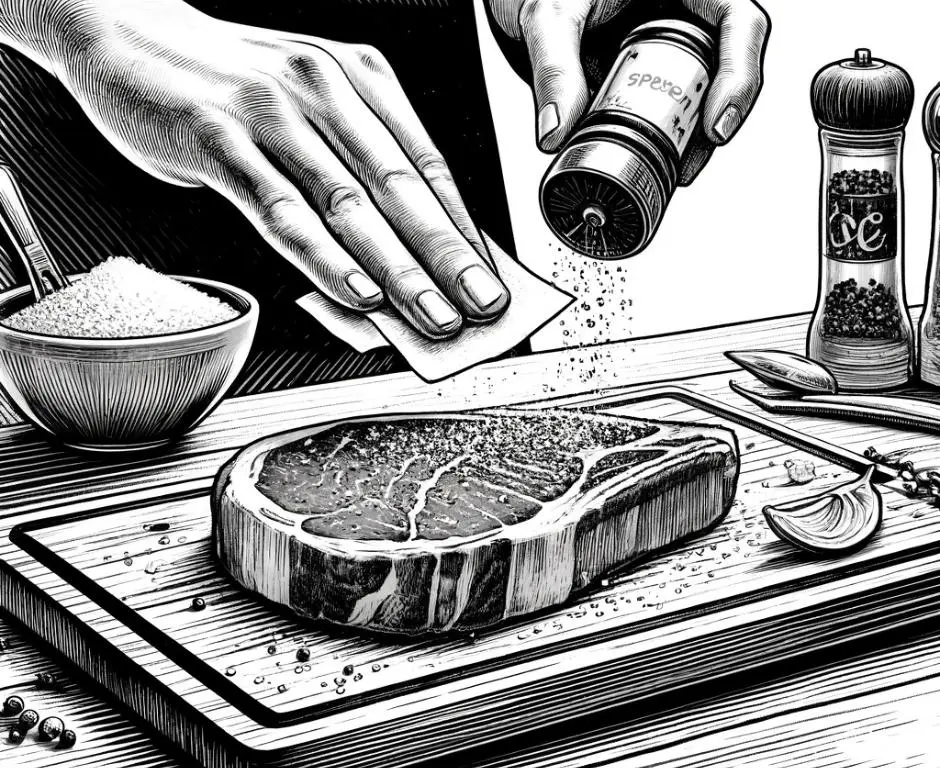
Sear the Meat:
Heat your skillet over medium-high heat on the stove and add a thin layer of oil with a high smoke point, like canola or vegetable oil.
Once hot, place the meat in the skillet. Sear until a golden-brown crust forms on all sides, usually about 2-3 minutes per side.
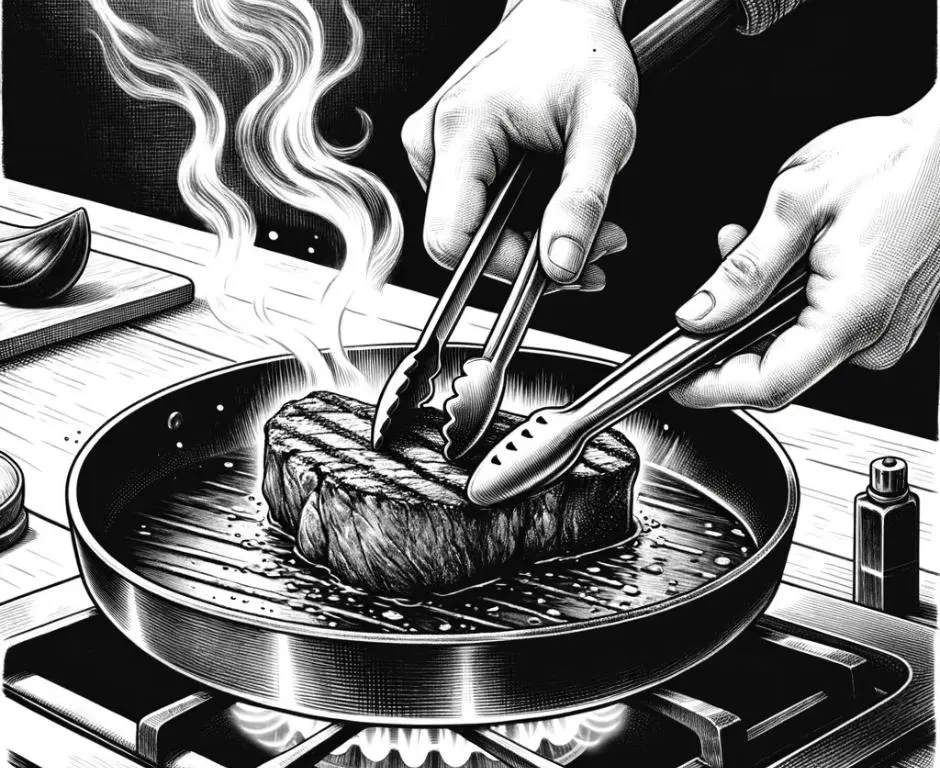
Transfer to Oven:
Without removing the meat from the skillet, transfer it directly into the preheated oven.
Roast until the meat reaches the desired internal temperature, checking with a meat thermometer. For example, for medium-rare beef, aim for an internal temperature of about 135°F (57°C).
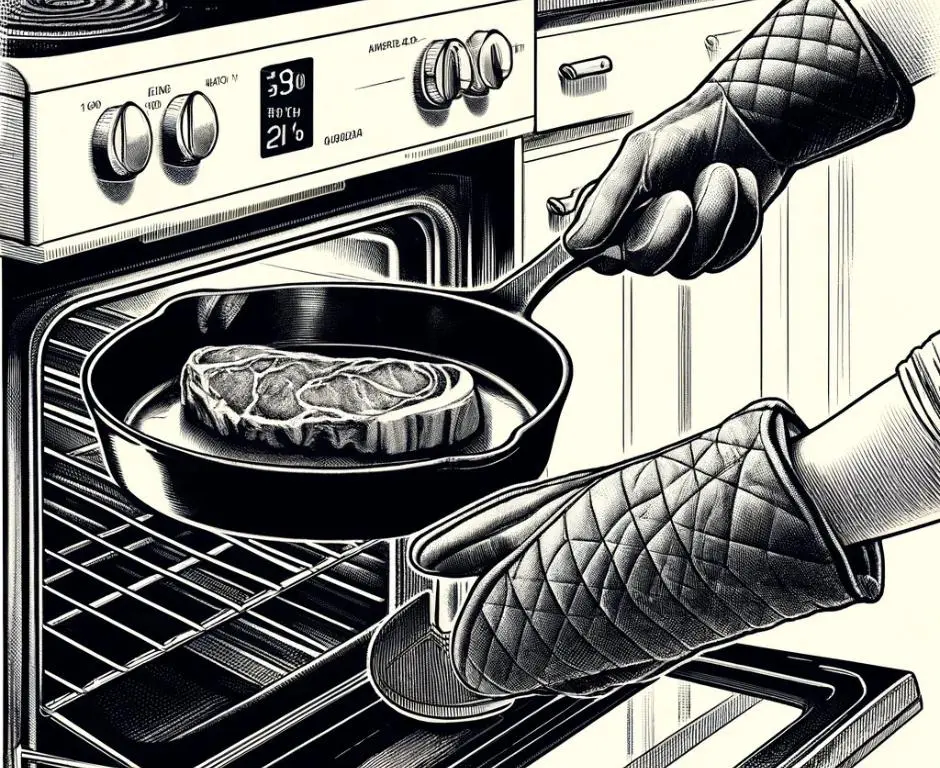
Rest the Meat:
Remove the skillet from the oven and transfer the meat to a cutting board.
Tent loosely with foil and let it rest for about 10 minutes before slicing. This allows the juices to redistribute throughout the meat.
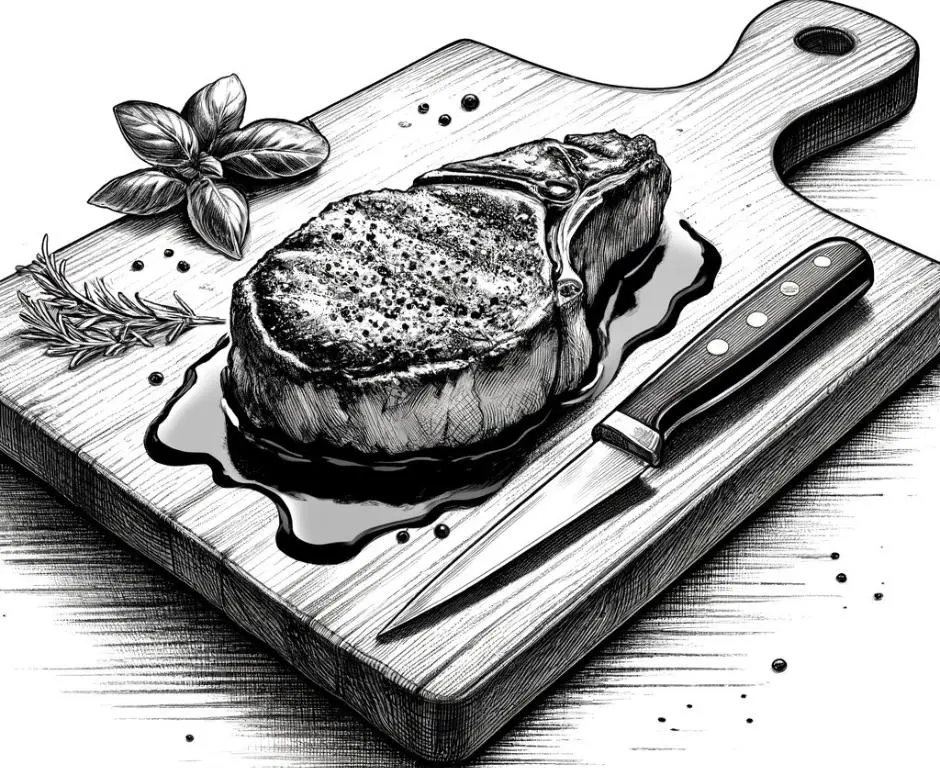
Tips for Perfect Pan Roasting
- Use an Oven-Safe Skillet: Ensure your skillet can transition safely from stovetop to oven.
- Don’t Overcrowd the Skillet: Cook in batches if necessary to ensure proper searing without steaming the meat.
- Monitor Internal Temperature: Use a meat thermometer to avoid overcooking, especially since oven temperatures and cooking times can vary.
Common Mistakes to Avoid
- Moving the Meat Too Soon: Allow the meat to sear undisturbed to develop a proper crust.
- Using the Wrong Pan: Non-oven-safe pans can be hazardous in the oven. Always use an appropriate skillet for safety and quality.
Conclusion
Pan roasting is an effective way to prepare a variety of meat cuts, offering a restaurant-quality finish with minimal fuss.
By mastering this technique, you can ensure delicious, perfectly cooked meals that are sure to impress. Whether you’re cooking a hearty steak, a tender pork chop, or a juicy chicken breast, pan roasting could become your go-to method for achieving culinary excellence at home.
